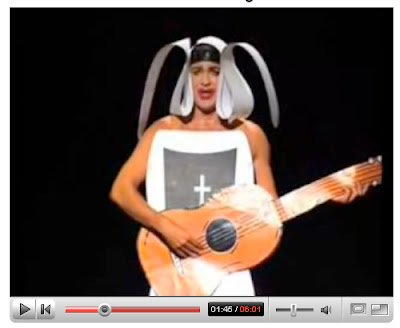Mark Simon Davies is a counsel at O’Melveny & Myers LLP, where he works on appellate matters in one of the top Supreme Court and Appellate practices in the country. Davies is the author of Patent Appeals: The Elements of Effective Advocacy in the Federal Circuit.
Yesterday, the Supreme Court issued another significant opinion in patent law. In a unanimous opinion authored by Justice Thomas, the Court held that a patent owner who licenses the sale of components has “exhausted” patent rights even where the components must be combined with additional components to practice the patent. In so deciding, the Court reasoned that the exhaustion doctrine applies to sales of products that include only the “inventive aspect” of the patent. This unanticipated focus of the Court’s decision reflects the Court’s apparent continuing interest in refocusing patent law on protecting the “inventive” contribution.
The question before the Court was whether the patent rights of LG Electronics, Inc. were “exhausted” by its  license agreement with Intel Corporation. Under the exhaustion (or first sale) doctrine, “the initial authorized sale of a patented item terminates all patent rights to that item.” Here, LGE owns patents covering various methods of managing main computer memory. LGE licensed Intel to manufacture and sell microprocessors and chipsets that practice the LGE patents. Intel sold the parts to Quanta Computer, a group of computer manufacturers, who made computers using the LGE/Intel microprocessors and chipsets in combination with non-LGE/Intel computer parts. LGE filed a complaint against Quanta, asserting that the combination of the LGE/Intel products with other computer parts infringed its patents. Quanta defended on the ground that LGE’s license to Intel “exhausted” and thus terminated its patent rights.
license agreement with Intel Corporation. Under the exhaustion (or first sale) doctrine, “the initial authorized sale of a patented item terminates all patent rights to that item.” Here, LGE owns patents covering various methods of managing main computer memory. LGE licensed Intel to manufacture and sell microprocessors and chipsets that practice the LGE patents. Intel sold the parts to Quanta Computer, a group of computer manufacturers, who made computers using the LGE/Intel microprocessors and chipsets in combination with non-LGE/Intel computer parts. LGE filed a complaint against Quanta, asserting that the combination of the LGE/Intel products with other computer parts infringed its patents. Quanta defended on the ground that LGE’s license to Intel “exhausted” and thus terminated its patent rights.
In siding with Quanta to find that LGE had exhausted its patent rights, the Supreme Court’s opinion proceeds in three steps. The Court begins by rejecting LGE’s argument that the exhaustion doctrine does not apply to “method” claims (i.e., claims that are not linked to a tangible article). The Court was wary that “[e]liminating exhaustion for method patents would seriously undermine the exhaustion doctrine” because patentees “could simply draft their patent claims to describe a method rather than an apparatus.” Next, the Court considered the “extent to which a product must embody a patent in order to trigger exhaustion.” On that question, the Court found that United States v. Univis Lens Co., 316 U.S. 241 (1942), “governs this case.” Just as the product in Univis “embodie[d] essential features of [the] patented invention,” so too Intel’s products embody “[e]verything inventive about each patent” and thus triggered patent exhaustion. “The Intel Products embody the essential features of the LGE Patents because they carry out all the inventive processes when combined, according to their design, with standard components.” Last, the Court determined that LGE’s contract with Intel “authorized” the sale of the products that practiced LGE’s patents (“Intel’s authority to sell its products embodying the LGE Patents was not conditioned on the notice”), and the Court expressed “no opinion on whether contract damages might be available even though exhaustion operates to eliminate patent damages.”
In various procedural respects, today’s decision resembles the Supreme Court’s patent law decisions of the past few terms. As it did most prominently in KSR Intn’l v. Teleflex Inc., 127 S. Ct. 1727 (2007), the Court has once again unanimously reversed a lower court decision based on a long-settled Federal Circuit rule favoring patent owners. As the briefing before the Court had emphasized, the Federal Circuit’s decision in Mallinckrodt, Inc. v. Medipart, Inc., 976 F.2d 700 (Fed. Cir. 1992), held that the patent-exhaustion doctrine does not apply to an “expressly conditional sale.” As in KSR, the Supreme Court declined to endorse the Federal Circuit’s “conditional sale” test. Instead, the Supreme Court again emphasized the abiding relevance of its older patent law decisions. Thus, here the Court found that Univis “governs this case” much like the KSR Court found that Graham v. John Deere Co. of Kansas City, 383 U.S. 1 (1966), provides the current “framework” for whether a claimed invention is “obvious.” Unlike KSR, however, the Court did not directly fault the Federal Circuit for a “rigid rule” (or even specifically refer to Mallinckrodt).
As is often the case with Supreme Court opinions, the immediate practical consequences of today’s decision may well be limited. The Court’s ruling that the sale here was not in fact conditional arguably leaves parties free to argue that the Federal Circuit’s “conditional sale” bar on exhaustion remains the law. Moreover, the Court expressly declined to consider whether LGE could use contract law to achieve its apparent objective of requiring its patent devices only to be used in computers manufactured with LGE parts.
Nevertheless, today’s Quanta decision provides a strong indication that the Supreme Court intends to continue restricting the enforceable scope of patents. The Solicitor General recommended that the Court hear Quanta. But the Supreme Court went beyond the Solicitor General’s request. Rejecting the advice of the Solicitor General not to reach the question, the Court relied on Univis to hold that the exhaustion doctrine applies to a product that embodies “[e]verything inventive” about the patent even if further “common and noninventive” steps are necessary to practice the patented invention. In this respect, Quanta is in close step with KSR. KSR closed by emphasizing that “the results of ordinary innovation are not the subject of exclusive rights under the patent laws.” So too in Quanta, the Court explained that a patent owner could not avoid the impact of the patent exhaustion doctrine merely because the patent includes “common” steps. In both cases, the Court has refocused patent law on protecting the “inventive aspect” of a patented invention.








Somehow this has a grapic quality that I like. Looking forward to seeing it complete.
spectacular cut-art!